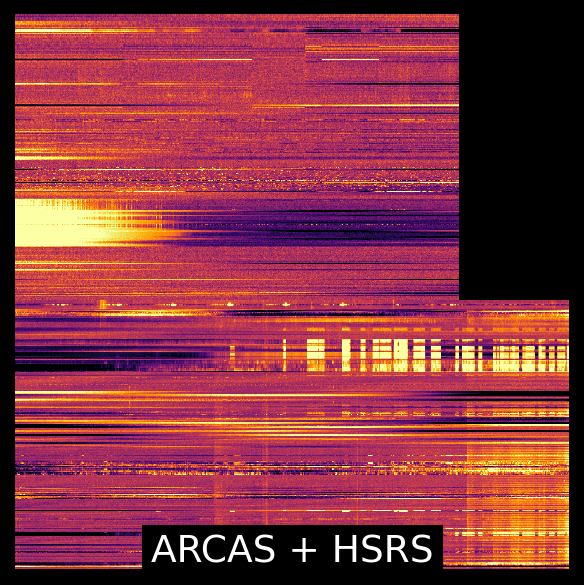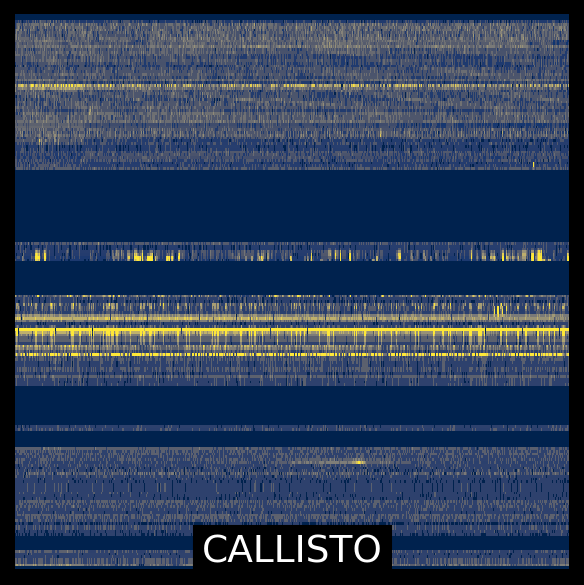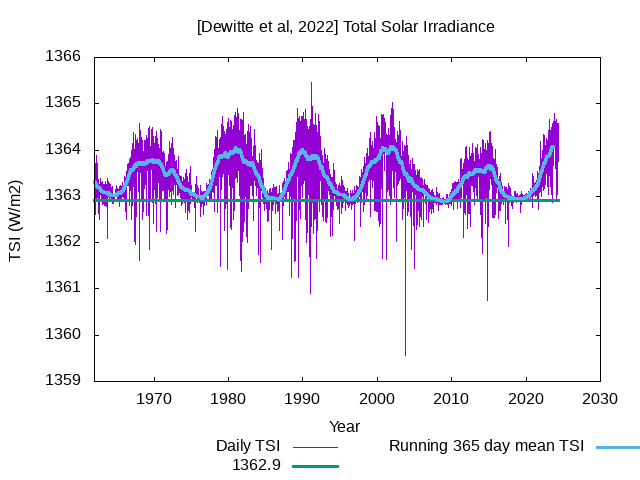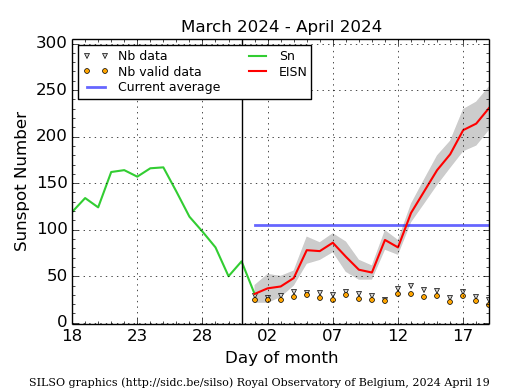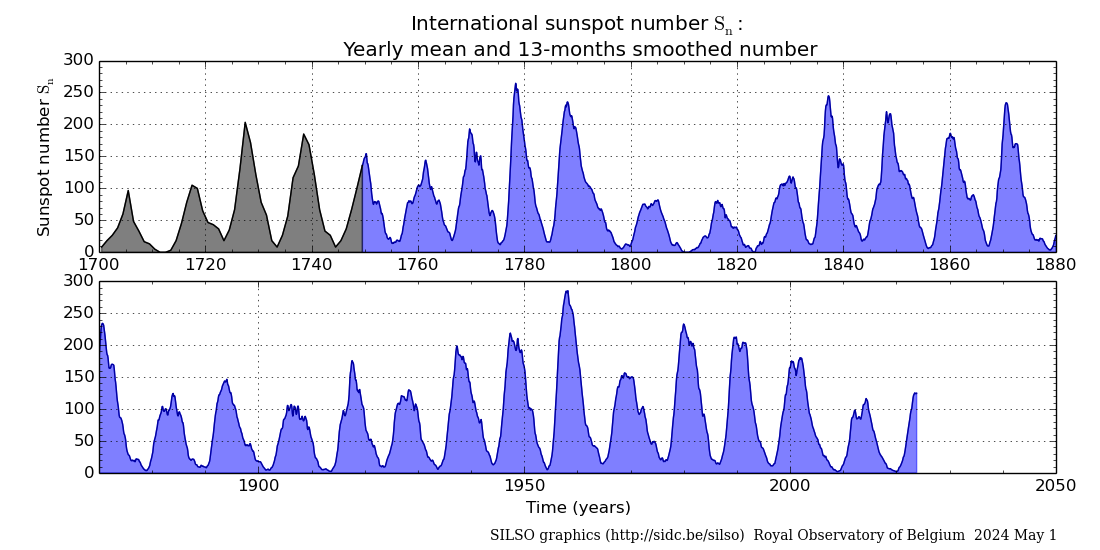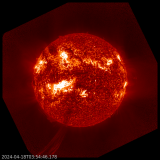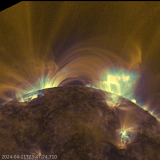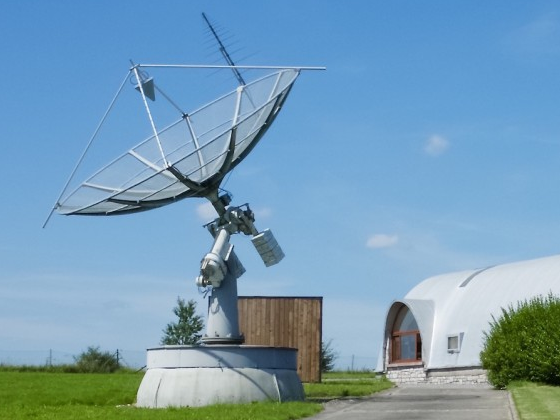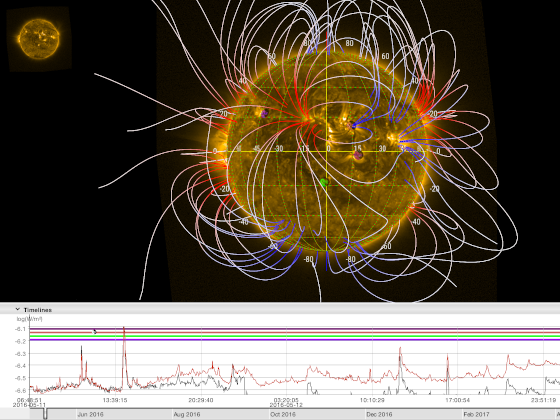Solar flaring activity was at moderate levels over the past 24 hours with two M-class flares. There are 9 numbered active regions on the visible solar disc with NOAA AR 3654 (beta-gamma) being by far the largest and the most complex, solely responsible for the moderate flaring. The strongest activity was a M3.0 flare, start time 21:29 UTC, end time 21:49 UTC, peak time 21:40 UTC on April 27th. The solar flaring activity is expected to be at low to moderate levels over the next days with possible isolated M-class flaring from NOAA AR 3654.
A very faint and slow coronal mass ejection (CME) was observed by LASCO/C2 to lift off the solar disc to the south-west after 11:00 UTC on April 27th. The CME might be related to earlier C2.6 flaring (peak time 09:05 UTC on April 27th) from NOAA 3654. This CME is very faint, not clearly visible in STEREO A coronagraph data and is not expected to produce significant impact on Earth. Should any of the plasma arrive, possibly on May 1st, it will probably be mixed with high speed streams on its way. No other Earth-directed CMEs have been observed in the available coronagraph imagery over the past 24 hours.
A long negative polarity coronal hole stretching from high northern latitudes down to the equator continues to reside on the central meridian. The high speed stream emanating from it might arrive to Earth on May 1st.
Over the past 24 hours the greater than 10 MeV GOES proton flux was at background levels and is expected to remain so over the next days.
The greater than 2 MeV electron flux as measured by GOES 16 and GOES 18 was below the1000 pfu threshold over the past 24 hours and is expected to remain so in the upcoming days. The 24h electron fluence was at nominal levels and is expected to remain so in the upcoming days.

